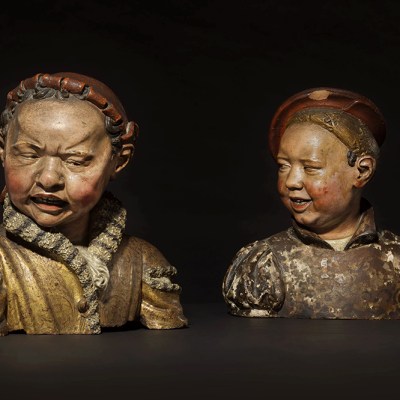
The Shortlist
Aracne
With this canvas-analysis software – now downloadable from the Prado’s website for free – users can analyse paintings from high-resolution photographs or X-rays. This software has helped the Prado date and attribute several works – for example, establishing that Rubens painted his copy of Titian’s The Rape of Europa in Madrid in 1628–29, rather than on his return to Antwerp – and it was crucial in the museum’s reattribution of a painting thought to be by Francisco Rizi to Francisco Herrera the Younger.

Getty Provenance Index
The Getty Provenance Index (GPI), launched in the 1980s, has become indispensable to curators and researchers. After a 10-year project to transform this database, more than 12 million records are available to the public. Drawing on a vast pool of archival materials, the GPI is especially strong on the provenance of European and American paintings, bringing to light not only the history of individual artworks but also the matrix of relationships around them.

Marks on Art
RKD – Netherlands Institute for Art History has launched an online database of some 1,500 marks on late medieval sculptures and 16th- and 17th-century paintings from the Netherlands, complete with pictures and detailed descriptions. The marks including positioning marks, which indicate how certain groups of statues were to be arranged. This remarkable resource, which will be continually updated with new records, helps art historians to trace a wide range of works back to specific makers, workshops and periods.

Romare Bearden Catalogue Raisonné Project
Over his long career, Romare Bearden (1911–88) created some 3,000 artworks, including collages, oil paintings, watercolours and prints. Earlier this year the Wildenstein Plattner Institute, in collaboration with the Romare Bearden Foundation, released online the first tranche of a catalogue raisonné, comprising more than 200 works created in 1964–69, as well as various papers and archive materials. During research some 700 previously unknown works by Bearden were discovered. The Wildenstein Plattner Institute is funded by the Hasso Plattner Foundation.

Trois Crayons Museum Forum
A platform for discussing and identifying pre-modern drawings in public collections, it allows curators, researchers and anyone registered as one of Trois Crayons’s ‘Museum Partners’ to share ‘problem’ drawings and pick their peers’ brains for answers to questions about dating, provenance, attribution and more. Since it was launched in July, institutions including the Met, the Courtauld, the Ashmolean and Princeton University Art Museum have used it, with commenters analysing style and subject and offering specific pointers.

UNESCO Virtual Museum of Stolen Cultural Objects
The Virtual Museum presents thousands of items from the UN’s database of looted artefacts in 3D. Designed by architect Francis Kéré to convey the experience of walking through a museum, it looks unlike any other website. Clicking on an artefact takes the user to information about the object, including when and where it was created and its cultural importance. The museum also funds projects in the real world – for example, co-financing the training of heritage workers in international inventory standards.

The winner will be announced on 20 November.
The Shortlists | Artist of the Year | Museum Opening of the Year | Exhibition of the Year | Book of the Year | Acquisition of the Year



